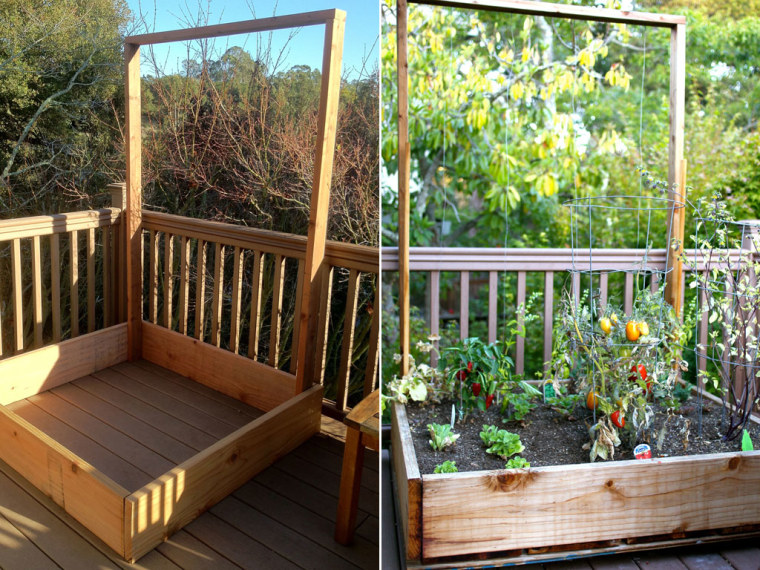I'm obsessed with Pinterest for the inspiration it provides, but my ratio of completed projects to pinned projects is about 1 to 60. The first pin I actually attempted was a compact vegetable garden box—perfect because spring was approaching and we didn't have a yard for planting. We did, however, have a south-facing deck and my kids, two through seven years old, were at the perfect ages to enjoy gardening. As much as I wanted to live off the land, this garden box would have to do. From the looks of the picture showcasing at least 16 different veggies in a 4 x 4 space, the garden box had great potential.
The original source of the compact vegetable garden was Boy's Life magazine. The directions were clear, simple, and Boy Scout badge-worthy. With exact measurements in hand, I headed to the lumberyard to pick up the wood and other necessary materials. Though I was confident I could nail the whole thing together by myself, my husband pitched in. We substituted twine for the wire and lined the bottom with landscaping fabric.
Next, came the task of choosing what we each wanted to grow, and sadly, the kids were not going to get the pumpkin and watermelon patch their hearts desired. A trip to our local nursery yielded seeds, starter plants, and some rich organic compost to mix into the soil. As we made our fruit and veggie selections, I envisioned our garden in the back of my mind: weed-free, gopher-free and bountiful. I pictured my kids learning life skills, assuming more responsibility and watering our garden on a regular basis. We'd plant a balanced combination of produce we eat on a regular basis—lettuce, cucumbers, strawberries—and new, foreign veggies my kids would grow to love because they grew them themselves. All spring and summer we were going to eat off the fat of the garden box!
Everything looked great at first, lovely green shoots against dark and somehow clean-looking dirt. But soon we noticed some nibbles on the new leaves, which had attracted the neighborhood Blue Jays. So we bought some mesh netting to keep the birds away. Mysterious nibbles continued to attack our tomatoes until one day, in broad daylight, we saw a rat crawl out from under the netting. As much as I didn't want to, we set a trap. Only a few weeks old, the garden was already teaching us so many lessons about the circle of life.
Despite these efforts, and our vigilant daily watering, our plants didn't thrive and our harvests were few and far between. But I've since learned that garden boxes should be watered more often than traditional gardens because they don't absorb or hold moisture like the earth. Armed with this knowledge, we will try again this spring and hopefully reap the fruits and veggies of our labor.
iVoice Christine Candelaria writes at her blog, The Aums, and you can follow her on Twitter @TheAumsMama.
A version of this story originally appeared on iVillage.
